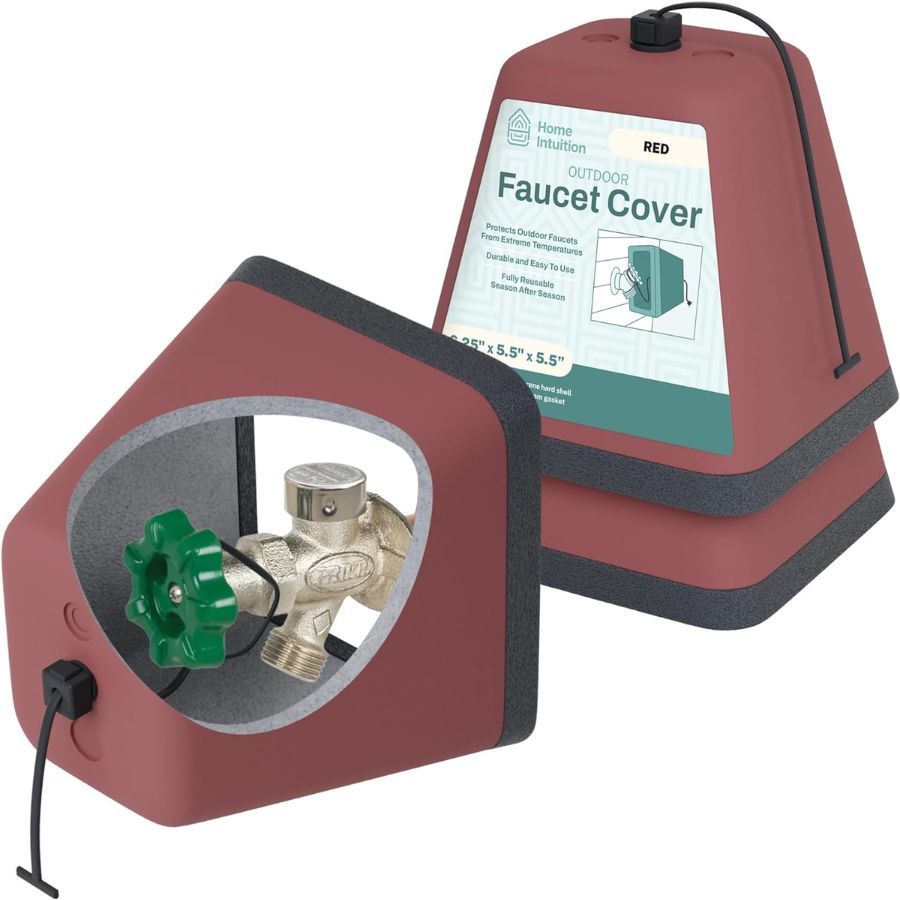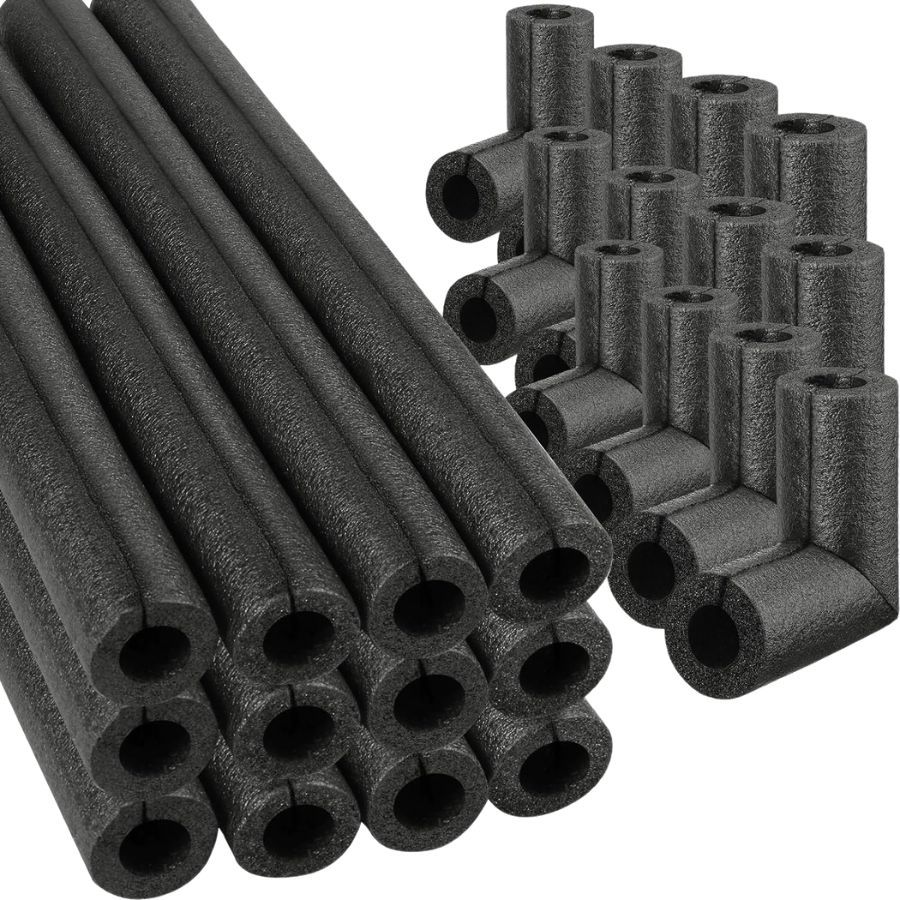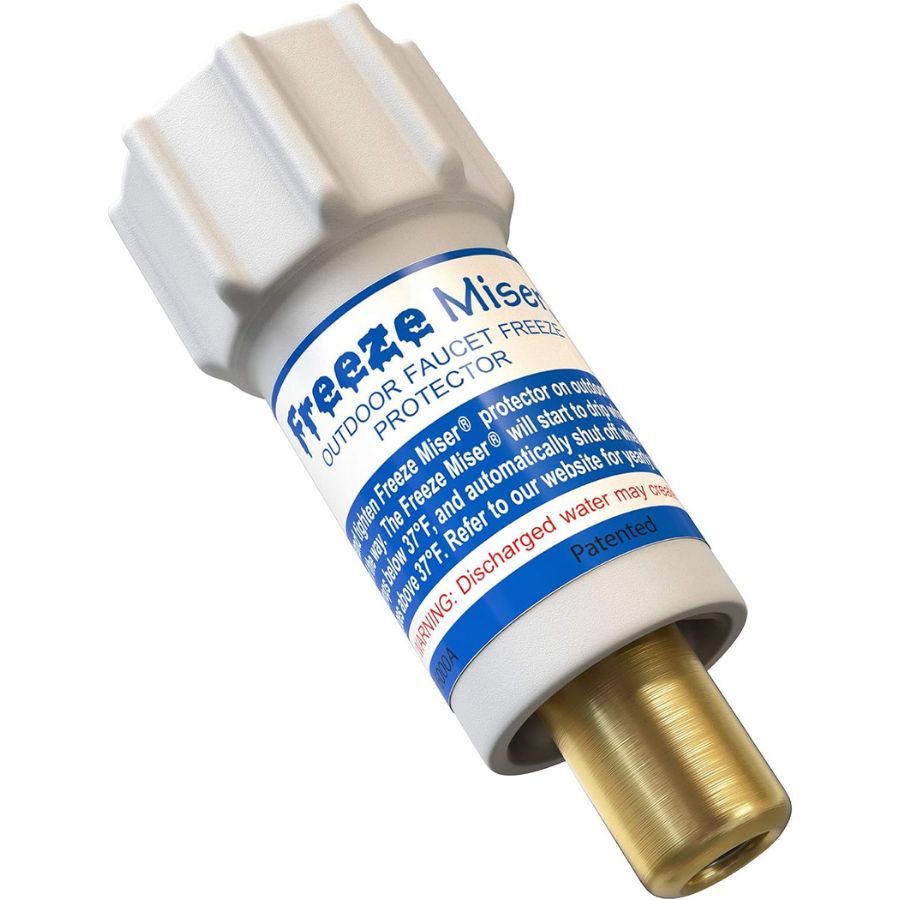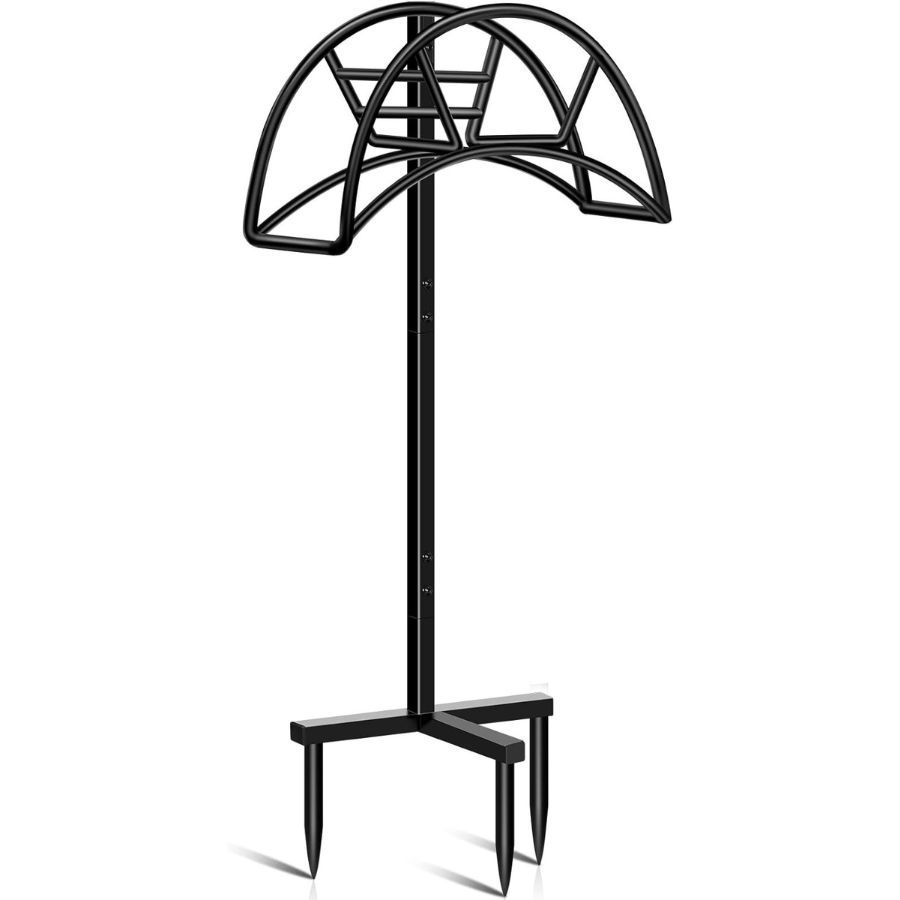How to Stop Outdoor Spigots From Freezing — and Causing Bigger Problems for Your Home
Prevention is always better (and less expensive) than cure, so learn how to stop your outdoor spigots from freezing in sub-zero temperatures

With most garden tasks finished for the winter, it's easy to forget about certain items, like an exterior tap or faucet. Yet knowing how to stop outdoor spigots from freezing, can prevent larger issues from arising.
Burst pipes are no fun and can be costly to fix, especially if you need to call an emergency plumber. Like most things in life, prevention is better than cure. Ideally the tasks ahead will have been done in the fall as part of your backyard's winterizing preparation. However, there may still be time, if you've not yet had the worst of the weather.
If it's an outstanding task, or you've not yet prepared your yard for winter conditions, here's how to stop outdoor spigots from freezing according to our plumbing expert.
1. Disconnect hoses
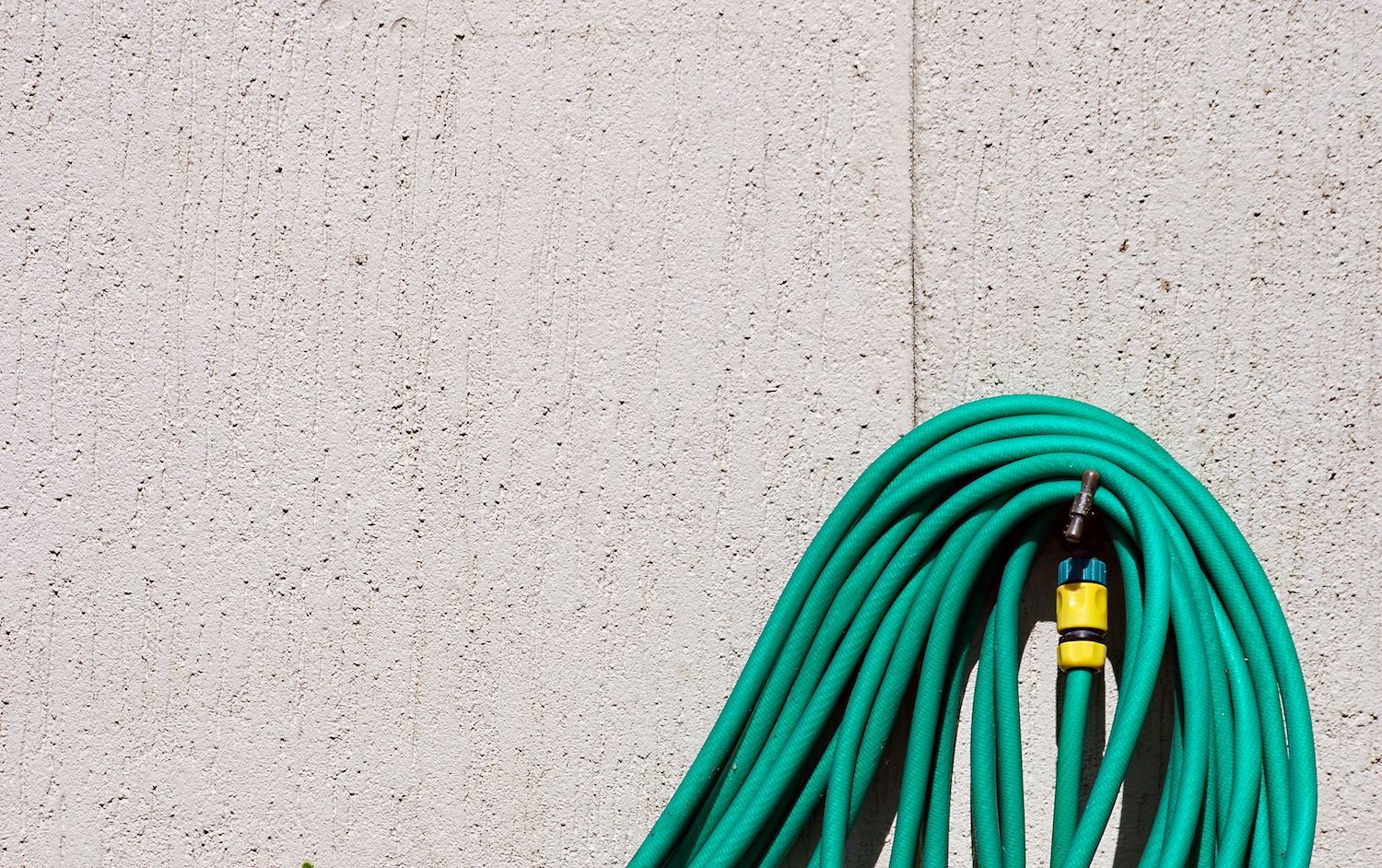
Ideally, an outdoor hose will already have been disconnected, rolled up and put away in the shed to prevent any damage to it or an exterior faucet. So tackle this task pronto to winterize your backyard, if it's still outstanding.
'We recommend that homeowners disconnect their outdoor hoses after Halloween if they live in the Northern states and after Thanksgiving if they live in Southern states,' says Paul Abrams at Roto Rooter Plumbing.
'When water inside garden hoses freezes, it will also freeze the hose bib (outdoor spigot) to which it is connected. Also, the hose bib’s water supply pipe in the wall can freeze.
'Since water expands when it turns into ice, the expanding ice will damage the spigot’s internal parts and cause it to drip after it thaws. If the spigot’s water supply pipe freezes (these are often copper, cast iron, or CPVC pipes), they will split open or burst.
'Often, the damage to the supply pipe isn’t discovered until the pipe thaws and begins spewing water into the wall cavity where it can cause flooding and water damage.'
2. Turn off shutoff valves and drain the water
Ensuring there is no residual water left in pipes that can freeze is essential in preventing burst pipes to exterior faucets or taps.
'If your house has water shutoff valves that feed your outdoor hose bibs (these are usually located in the basement or in a first-floor closet along the outside wall), turn off the interior shutoff valves then open the outdoor hose bib valves to drain away the water left in the pipes,' advises Paul.
'If your home is equipped with frost-proof hose bibs, you probably don’t have interior shutoff valves to deal with.'
3. Cover hose bibs
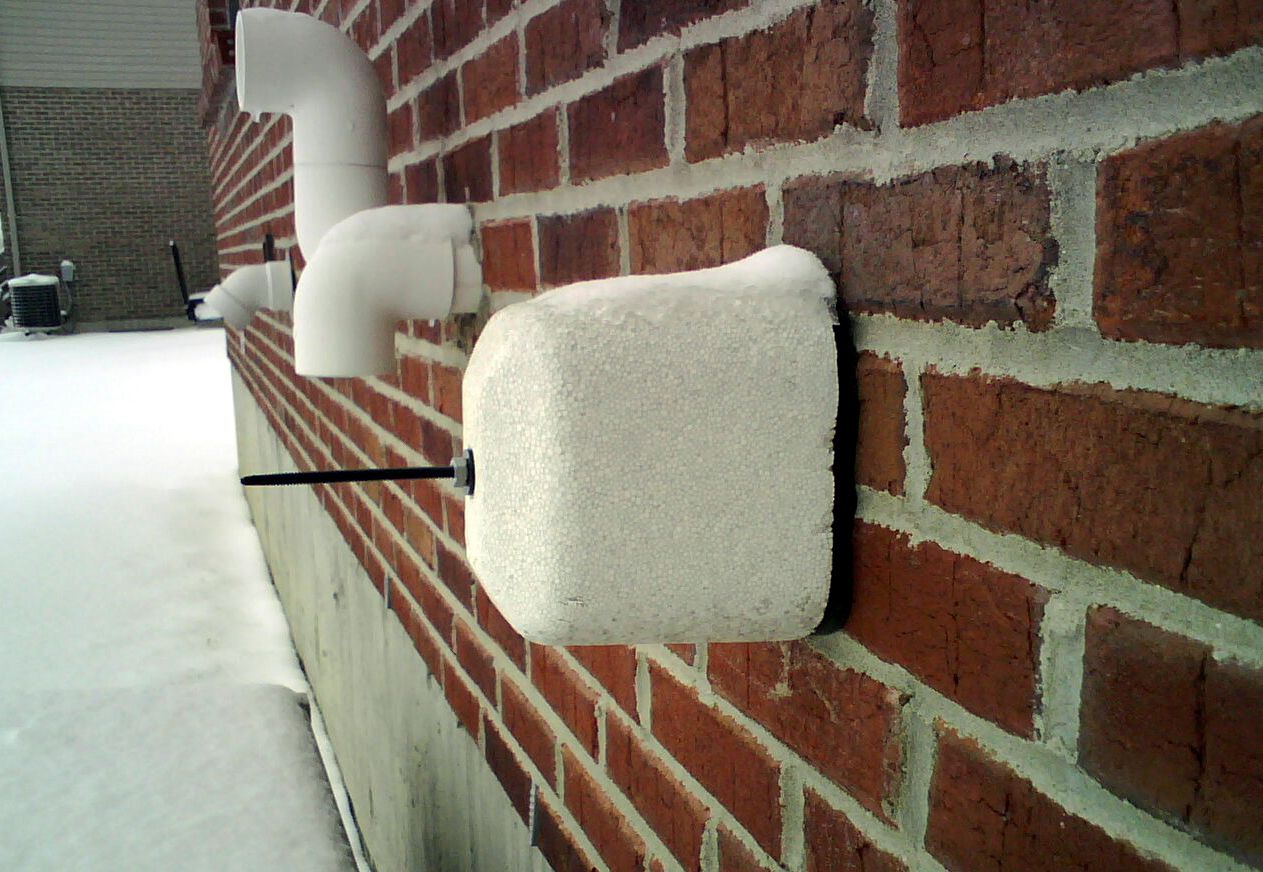
'Next, cover each hose bib with a Styrofoam bib cover and cinch it tightly to the siding or brick to prevent cold air and wind from getting inside,' continues Paul.
'Even if your home has frost-proof hose bibs, it’s still a good idea to cover the hose bibs for an extra layer of protection. The insulated faucet covers only cost four or five bucks each, which is a small price to pay compared to expensive plumbing and property damage.'
4. Insulate exposed pipes
As well as protecting and covering the outdoor spigot itself, it's worth insulating any exposed pipes too according to Paul at Roto Rooter Plumbing.
'If you live in a pier and beam home and you know certain water pipes beneath the home are exposed and accessible, wrap them in pipe insulation and even thermostat-controlled heat cables,' says Paul.
5. Allow any warm air to circulate
'If you know that freezing temperatures are in the forecast, open cabinets below all sinks located along outside walls to allow warm air to circulate around the pipes,' he continues.
'Make sure the furnace is turned to at least 55-degrees Fahrenheit and turn on faucet taps in the kitchen to a trickle to keep water moving through the pipes and prevent them from freezing.'
What should I do if the outdoor spigot has frozen?
'If the outdoor spigot freezes, open the spigot valve to relieve pressure in the water line,' explains Paul. 'If you have access to its water supply pipe (such as in a basement ceiling) or know the pipe’s location behind the wall, you should attempt to warm the pipe or the wall with a hair dryer or space heater to thaw the ice plug and relieve pressure on the plumbing.
'Never use an open flame to thaw pipes, it could cause fire. If the pipe has already burst and thawed, you may hear water running inside the wall or see it running onto the floor beneath the baseboard.
'If you have a basement, inspect the area beneath the hose bib’s position and look for water. If your house has an interior shutoff valve for the hose bib, turn off the water at the valve.
'If not, you will have to turn off the home’s main water supply valve to prevent flooding. The valve is usually located in the front of the house or in the basement.
'Call a plumber to repair the damaged pipe and hose bib. Many plumbers also have pipe thawing equipment that can thaw a pipe before it suffers catastrophic damage.'
Be The First To Know
The Livingetc newsletter is your shortcut to the now and the next in home design. Subscribe today to receive a stunning free 200-page book of the best homes from around the world.
Jacky Parker is a London-based freelance journalist and content creator, specialising in interiors, travel and food. From buying guides and real home case studies to shopping and news pages, she produces a wide range of features for national magazines and SEO content for websites
A long-time contributor to Livingetc, as a member of the team, she regularly reports on the latest trends, speaking to experts and discovering the latest tips. Jacky has also written for other publications such as Homes and Gardens, Ideal Home, Red, Grand Designs, Sunday Times Style and AD, Country Homes and Interiors and ELLE Decoration.
-
 This East Village Loft Captures the "Urban Aunt" Aesthetic — This is How to do Apartment Living in 2024
This East Village Loft Captures the "Urban Aunt" Aesthetic — This is How to do Apartment Living in 2024The Urban Aunt aesthetic is gaining traction across our socials, and this NYC loft is the perfect example of the trend in action
By Oonagh Turner Published
-
 "It's a Total Trove If You Know How To Shop" — The Best Amazon Lighting Found by Our Style Editor
"It's a Total Trove If You Know How To Shop" — The Best Amazon Lighting Found by Our Style EditorShop the best Amazon lighting options, from pendants and flush mounts to table and floor lamps. Whatever your style, there's something here for you
By Brigid Kennedy Published
